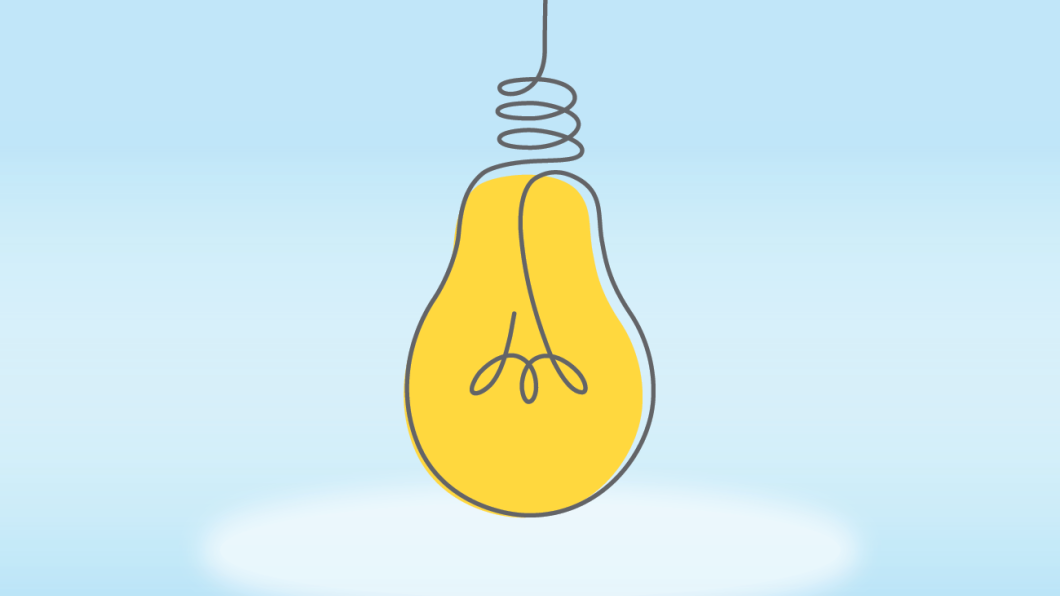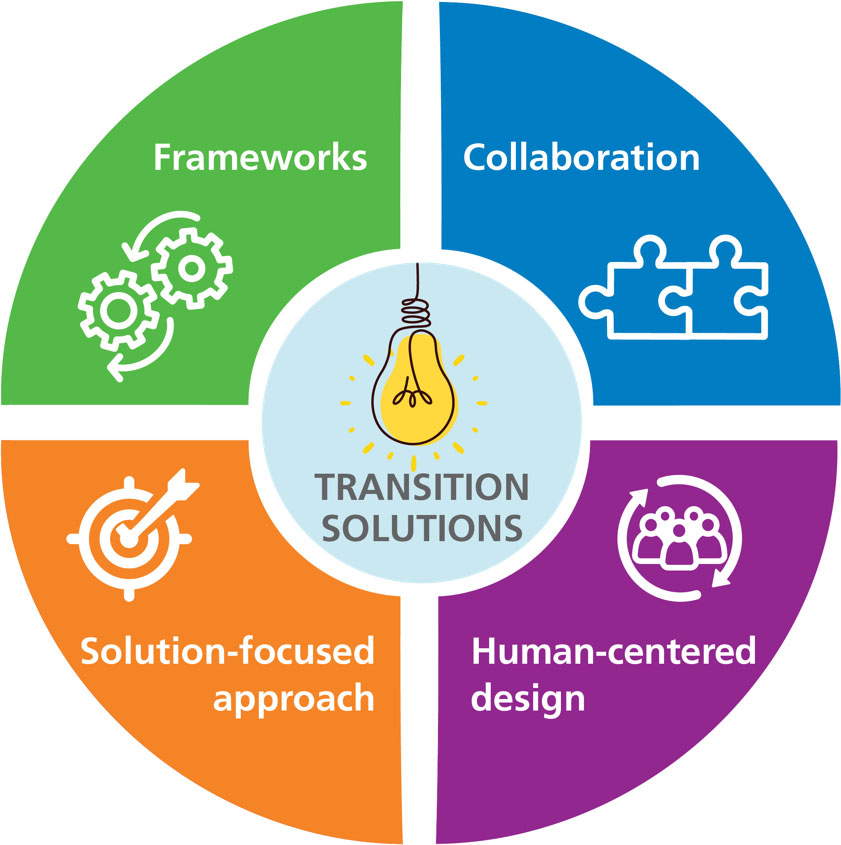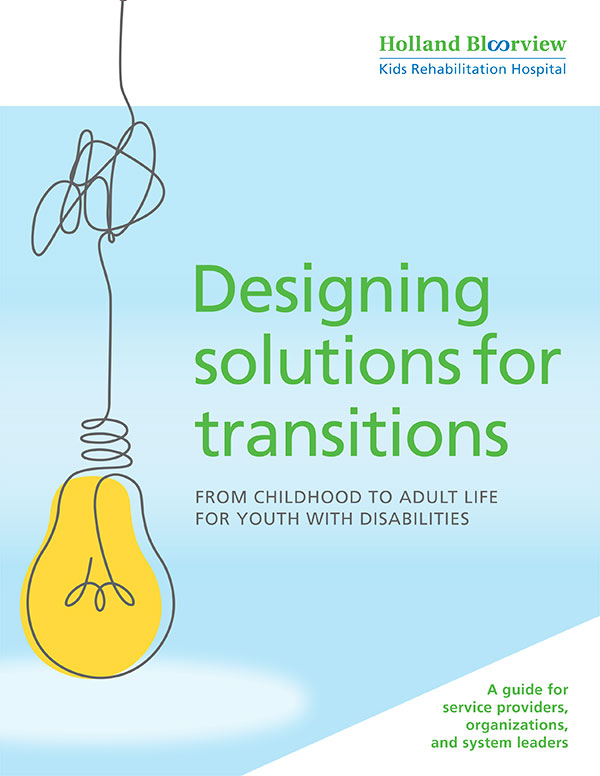
Holland Bloorview launches a transitions guide for service providers to enhance transitions from childhood to adult life for youth with disabilities.
Holland Bloorview Kids Rehabilitation Hospital is thrilled to announce the launch of a transformative transitions guide, an innovative resource designed to empower service providers, organizations, and system leaders in creating seamless transitions for youth with disabilities and medical complexities as they navigate the challenging journey from childhood to adulthood.
The transitions guide is the result of a partnership between Evidence to Care (EtC) – the knowledge mobilization hub, and the transitions Strategy Team. Born out of a five-year strategy that was launched in 2017 and the lived experiences of youth with disabilities and families, the guide is informed by comprehensive research and expert insights. It aims to enhance existing transition practices by providing service providers and system leaders across health care, community, education, and social contexts with a comprehensive resource that empowers them to create evidence-informed, needs-based solutions.
Among its key objectives, the guide:
- Identifies best practices and impactful frameworks to guide transition practice;
- Discusses the role of a solution-focused approach to generating practical solutions to real-world barriers;
- Describes the critical role that human-centered design can play as an approach to boldly reimagine transitions;
- Highlights the necessity of collaborating with children, youth, families, community agencies, organizations, and system partners;
- Provides tools and resources to support using the approaches outlined.
Guiding Tenets
At the core of the transitions guide are four essential tenets that guide the creation of transition solutions: frameworks, a solution-focused approach, human-centered design, and collaboration.

Check out page 9 of the guide (PDF) for more information about the tenets.
The transition from childhood to adulthood is rife with uncertainties and challenges, particularly for those with disabilities and medical complexity. Through this comprehensive framework, Holland Bloorview aims to address the multi-faceted challenges and opportunities that arise during the transition phase.
We interviewed Laura Bowman, project manager, research and evaluation, employment pathways, and Jean Hammond, family partnerships specialist, client and family integrated care about the transitions guide:
What inspired the creation of this guide, and why is it particularly important for service providers?
Laura: The creation of this guide was inspired by the learning and innovation of the team. The five-year transitions strategy provided us the opportunity and privilege to create innovative and integrated transitions solutions that bring together client, family, and system realities. Our solutions were met with increasing enthusiasm and appreciation.
The guide provides service providers and management with approaches to conceptualizing how they will leverage their strengths, include community, policy, and lived experience needs, and create sustainable and agile solutions for current health care needs. We have also given examples of how we used our approaches/tenets in our own work, as well as resources and information to guide their work.
What key challenges or obstacles do youth with disabilities often face when transitioning to adulthood, and how does the guide address these issues?
Jean: Youth with disabilities and their caregivers must navigate many new systems as they transition to adulthood. They must leave their familiar health care providers in the pediatric sector and connect with new providers in the adult sector, getting to know them and ensuring their medical history and current condition is fully understood and supported. They must access new sources of funding which involves many forms, interviews, intake meetings, etc. And they must start to lay the foundations for their life as adults, thinking about things like post-secondary education and training, employment and volunteer opportunities, housing options and seeking the support they will need to participate in their community as adults.
As the parent of a typically-developing 21-year-old and an 18-year-old with a disability, I can attest that becoming an adult is a challenging time for all youth, but the complexities of transitioning to adulthood for youth with disabilities and their families are truly next level.
Could you highlight some of the most valuable and unique insights that the guide provides?
Jean: It demonstrates the possibility of partnering and engaging with service users from the very beginning of their transition design process, highlighting the benefits of including a client and family voice and showing the impact of their wants, needs and preferences in the tools they develop.
The guide recognizes that there is no “one size fits all” transition solution, and that different approaches are needed for each organization and each client. The four tenets in the guide, and the examples we share about how we employed them at Holland Bloorview, will provide other organizations with a blueprint which they can customize to their unique situation and client population.
Can you elaborate on any partnerships or collaborations that contributed to the guide's creation?
Laura: Many different partnerships contributed to the creation of the guide. The partnership between the transitions strategy and EtC is primary among them. The EtC team’s knowledge mobilization expertise enabled us to reflect upon the outcomes of the transitions strategy and organize our learning into four foundational areas or ‘tenets.’ They brought our accomplishments to life and provided a meaningful narrative for what we did.
The transitions strategy itself was predicated upon collaboration and partnership. Collaboration is foundational to three of the four tenets within the guide (collaboration and co-design, human-centred design, and a solution-focused approach). The services and innovations discussed in the guide are based on active collaboration. A national group of collaborators from the lived experience, health, research, and education realms also reviewed the guide.
What resources or tools does the guide offer to help service providers and organizations implement its guidance?
Laura: The guide is brimming with resources for readers. The team has included tips on how to implement suggested practices, examples of how we have used them, and links to resources and best evidence that are already available in the community. Examples of our successful projects – such as our employment pathway service and transitions pop-ups – are interwoven with our foundational tenets, best evidence, and tips for readers.
What do you hope will be the long-term impact of the guide?
Jean: My hope is that the guide will remove the barriers many organizations and health care providers feel about tackling the challenges of transition to adulthood for kids with disabilities. The long-standing notion of this being an unsolvable, system-wide problem and the assumed inevitability that youth and families will feel ill-prepared for their new lives as an adults can finally be put to rest.
As others read the guide, they will be inspired to examine the current state of the transitions supports they offer, and the gaps in service their clients and families are experiencing, and then to work with their clients and families to collaborate in the improvement and development of new supports which will help ease the burdens and challenges youth with disabilities and their families face going forward.
The launch of the transitions guide underscores Holland Bloorview's commitment to facilitating positive and empowering transitions for youth with disabilities. As service providers, organizations, and system leaders engage with this comprehensive guide, they are encouraged to embrace new ideas, start conversations, and consider the transformative potential of the strategies outlined.
For more information about the transitions guide, please visit the Transition Guide web page or contact Evidence to Care.
